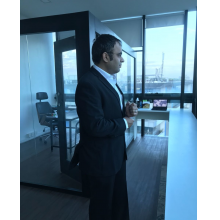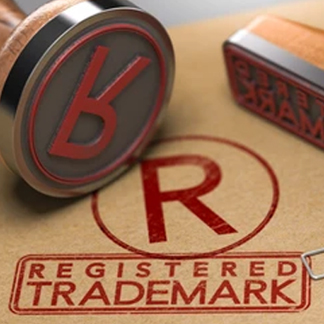Safeguard your business’ Intellectual Property assets

Legal & Compliance
340 week ago — 9 min read
Summary: Every business has certain intangible assets such as a unique idea, logo, brand or content which need to be protected from potential misuse or misappropriation. These intangible assets fall under the purview of a firm’s ‘Intellectual Property’. The protection and management of a business’ intellectual property can thus be a critical factor determining its success or failure. Chirag Tanna explains in detail different types of intellectual property and how to safeguard the same.
Intellectual property is a broad categorical description for the set of intangibles owned and legally protected by a company from outside use or implementation without consent for a certain period of time. There are four main types of Intellectual Property:
Trademarks: Ownership of brand name, company name, logo
Patents: Ownership of technology and science
Copyrights: Ownership of content, creative work
Design Registrations: Ownership of aesthetic work on products
1. Trademarks
Where do trademarks help?
A trademark, essentially, protects a brand name and logo; product name and logo; company name and logo; website name and logo; application name logo and the like. It is a distinctive sign or indicator used by an individual, business organisation, or other legal entity that the products or services to its consumers, with which the trade mark appears originate from a unique source, and to distinguish its products and / or services from those of other entities. A trademark protects a name brand or logo that is used in a commercial application to distinguish one company from another. Checking the Register of Companies is not enough! Even obtaining a domain name is not enough! Conduct a jurisdiction-wise trade marks’ search (most searches are free, if you know where to look)
Professional help
A Trademark Agent or a Trademark Attorney is licensed to represent a client before the State (Trademark Registry and Offices of that state).
Securing rights
The following can be registered as a trademark but a mark must be distinctive and capable of distinguishing your goods or services from similar ones of other traders:
• Letters
• Words
• Names
• Signatures
• Labels
• Shapes
• Colours
• Sounds
How to determine infringement?
Always be on the lookout for similarities in the market. These may be visual similarities for logo marks, phonetic similarities for word marks, literal similarities for word marks, and the like. Gather evidence of dates of inception, use, continuous use, market size, market similarity, class similarity, goods and services.
Conduct an online Ssearch – Google it. Create news alerts.
Acts associated with trademarks
Trade Marks Act, 1999 and the Trade Mark Rules, 2002
Symbols
TM – when trade mark is applied for
® - when trade mark is granted
2. Patents
Where do patents help?
A patent essentially relates to inventions in the field of science and technology.
A patent is a set of exclusive legal rights granted by a state (national government) to an inventor or its assignee for a limited period of time in exchange for a public disclosure of an invention. A patent is a monopoly of sorts which allows a patent owner to carve their own niche in the business market by defining their 'new' territory. Specifically, the grant of a patent allows a patent owner to prevent others from making / use /sale of the patented product / process within the jurisdiction in which the patent has been granted.
Some companies patent technologies with a business strategy of licensing their inventions. If not, they pursue infringers and sue them. This forms a part of an offensive strategy.
Some companies patent technologies with a business strategy of merely creating a legal fence in relation to their technologies but in order to increase the culture of innovative research and development, and to capture market size based on innovative technologies. This forms a part of a defensive strategy.
Innovation may be a part of a company’s products, services, as well as business processes. And all can be patented.
Do not disclose your idea without securing confidentiality clauses. If there is reason to believe that the idea is new and inventive, file for a Provisional Patent Application. It is an effective form of securing global protection for a period of 12 months. Sign NDAs (Non-Disclosure Agreement) and confidentiality agreements before disclosing anything.
3. Copyrights
Where do copyrights help?
A copyright is a type of intellectual property protection that covers works of art and similar things. This includes writing, illustrations, music, films, and just about any other artistic expression of ideas or concepts. Copyright is an automatic right. It may not be registered. However, registration paves an easier way in cases of infringement in order to determine creator of the work.
Website layouts, source codes, graphical user interfaces; all form a part of copyrights.
Securing rights
Copyrights protect important aspects of a website or an application.
The following may be protected under copyright laws:
•Literary works (e.g., written works, graphical user interfaces, website layouts, source codes of computer programs)
•Dramatic works (e.g.,. scripts for films and dramas)
•Musical works (e.g., melodies)
•Artistic works (e.g., paintings, photographs)
•Published editions of the above works
•Presentations
•Business Plan
•Brochures
•Sound recordings
•Films and movies
•Television and radio broadcasts
•Television programmes
•Performances
How to determine infringement?
Keep a tab on the market; people in similar of allied fields. Be extremely cautious while outsourcing your ‘creative’ work or while hiring a contractor. Copyright resides with the creator or author. Hence, legal agreements need to be pre-decided in order to allow transfer of copyright before expiration of contract. Agree with contract workers, before hands.
Acts associated with copyrights
Copyright Act, 1957 and the Copyright Rules, 1958
Symbols
© - copyright, upon creation of original matter
4. Design Registration
Where do designs help?
A design registration or an industrial design right is an intellectual property right that protects the visual aspects or the aesthetics of any product. Shape and configuration protection warrants a design registration.
Professional help
A Patent Agent or a Patent Attorney is licensed to represent a client before the State (Design Registry and Offices of that state).
Securing rights
A design registration is for an "article". The design should relate to features of shape, configuration, pattern or ornamentation applied or applicable to an article.
Thus, designs of industrial plans, layouts and installations cannot be registered under the Act.
The design should be applied or applicable to any article by any industrial process. Normally, designs of artistic nature like painting, sculptures and the like which are not produced in bulk by any industrial process are excluded from registration under the Act.
How to determine infringement?
Always be on the lookout for similarities in the market
Gather evidence of dates of inception, use, continuous use, market size, market similarity, class similarity, goods and services.
Conduct an online Search – Google it. Create news alerts.
Refer to the patent document that you own. Refer to similarities in design. Find differentiations. Seek expert opinion.
Acts associated with designs
Designs Act, 2000 and the Designs Rules, 2001
Symbols
•Design Registration Number
Check out the Intellectual Property India website for details on how to safeguard your intellectual property assets.
To explore business opportunities, link with me by clicking on the 'Invite' button on my eBiz Card.
View Chirag 's profile
Most read this week












Comments
Share this content
Please login or Register to join the discussion